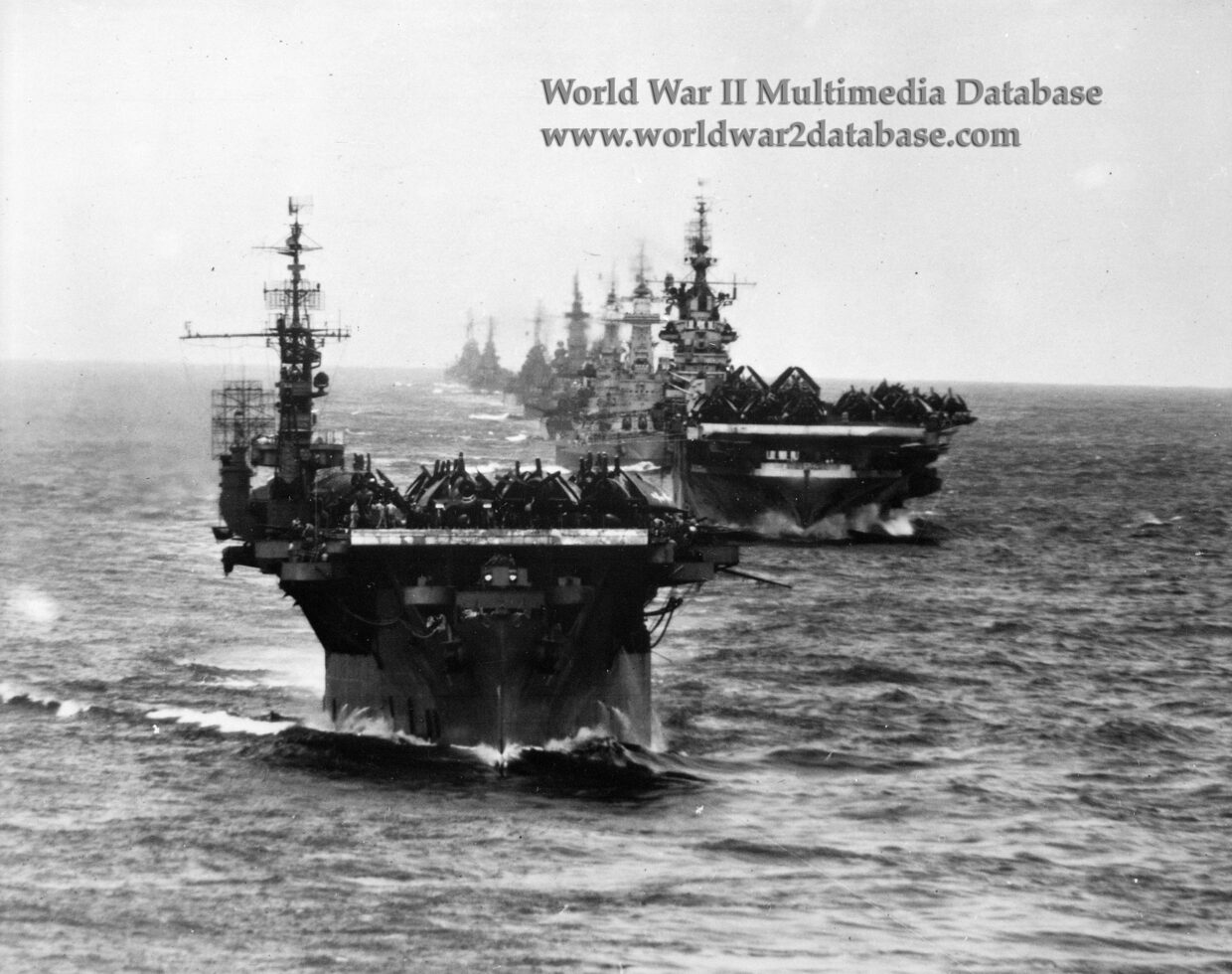| Task Group 38.3 (TG 38.3) in line as they enter Ulithi Anchorage after strikes against the Japanese on Luzon, Philippines. Ulithi was the largest and busiest American naval base in the Pacific at the time. USS Langley (CVL-27), USS Ticonderoga (CV-14), USS Washington (BB-56), USS North Carolina (BB-55), USS South Dakota (BB-57), USS Santa Fe (CL-60), USS Biloxi (CL-80), USS Mobile (CL-63), and USS Oakland (CL-95). TG 38.3‘s USS Essex (CV-9) was damaged by a kamikaze on November 25, 1944. Task Force 38 (TF 38), under Admiral William “Bull“ Halsey, claimed one heavy cruiser, three destroyers, three landing ships, one destroyer escort, six cargo ships, four small oilers, and two barges sunk; five cargo ships, three landing ships and one oiler probably sunk; one oiler, seven cargo ships, and nine barges damaged. It is confirmed that TF 38 sank Kumano, Yasoshima, First Class Landing Ships No. 6 and No. 10, Second Class landing ships T-113, T-142 and T-161, among other assorted craft. They also shot up airfields on Luzon to try to eliminate the kamikaze threat. USS Langley, leading the formation is an Independence-class light carrier, capable of operating 30 planes (USS Ticonderoga, an Essex-class carrier, could fly off 80-90). It was built on a Cleveland-class cruiser hull as emergency construction to provide more carriers in 1942. Nine Independence-class carriers joined the fleet in 1943 and served for the remainder of the war. | |
| Image Filename | wwii1260.jpg |
| Image Size | 1.83 MB |
| Image Dimensions | 2934 x 2318 |
| Photographer | Unknown |
| Photographer Title | |
| Caption Author | Jason McDonald |
| Date Photographed | December 02, 1944 |
| Location | Ulithi |
| City | Ulithi |
| State or Province | Carolines |
| Country | Micronesia |
| Archive | National Archives and Records Administration |
| Record Number | |
| Status | Caption ©2007, ©2024 MFA Productions LLC Image in the Public Domain |

Author of the World War II Multimedia Database

